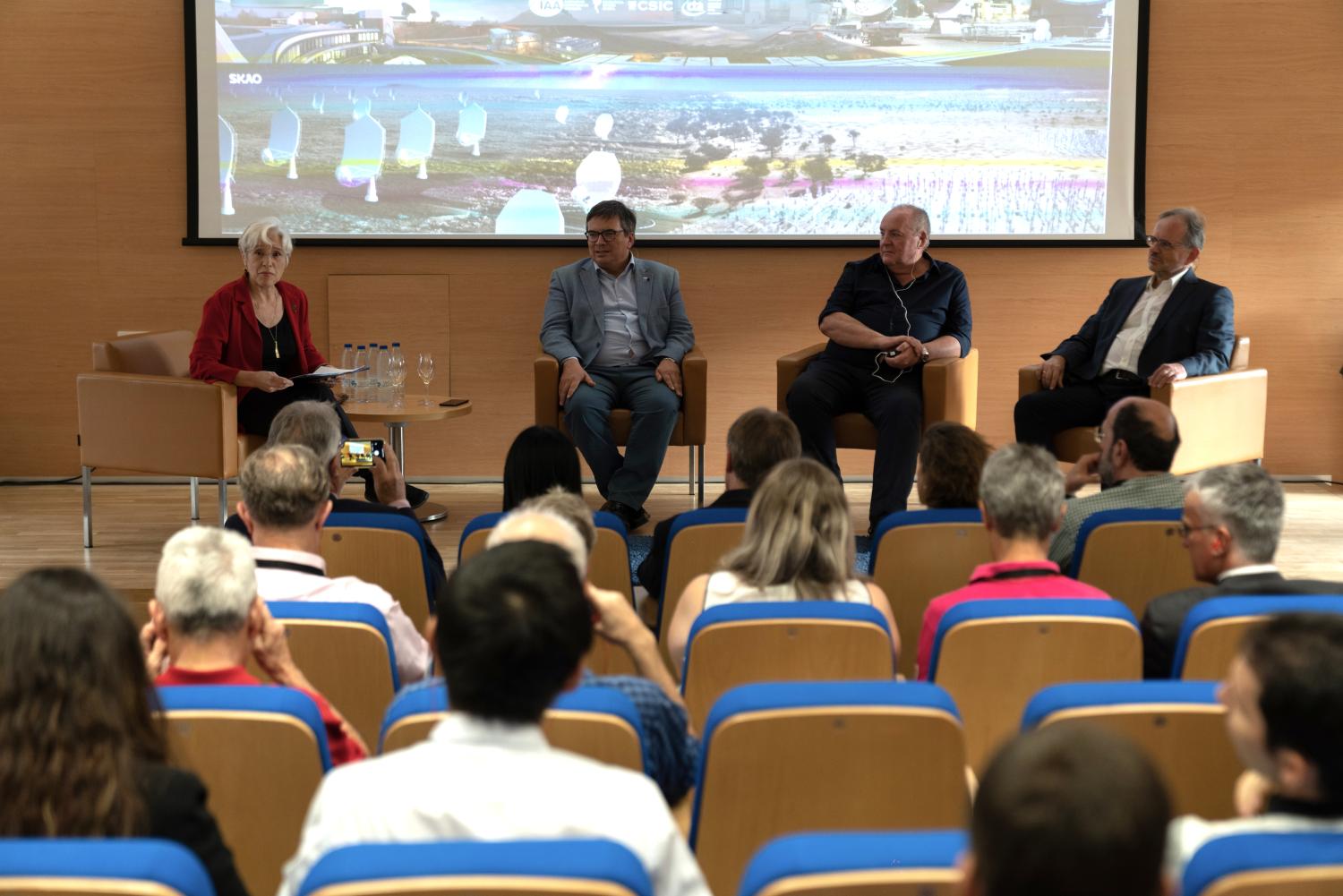SKAO D-G emphasises importance of collaborative, multi-wavelength science at Spanish event
The Instituto de Astrofísica de Andalucía (IAA) hosted the roundtable on the sidelines of the 2022 Big Science Business Forum, with the IAA’s Deputy Science Director, Isabel Márquez, acting as moderator. The event highlighted the significant advances that the SKAO’s radio telescopes, CTAO’s gamma-ray facility, and ESO’s optical-infrared Extremely Large Telescope (ELT) will bring, as well as discussing the current technical challenges and broader significant societal impact the projects share.
SKAO Director-General Prof. Philip Diamond joined ESO Director-General Xavier Barcons and CTA Project Manager Wolfgang Wild to elaborate on their respective observatories' scientific goals, technology, impact, and governance. The three projects are all major international collaborations, with numerous member states involved. They show a clear trend towards collaborative, multi-wavelength science with an emphasis on diversity and sustainability in their practices.
“Working with nations as diverse as China to Canada, or India to Spain and SKAO’s three host countries -to name just a few- is a joy,” Prof. Diamond said during the discussion. “All of them have the same goal through their involvement in large-scale astronomy infrastructures, and that is: build the telescopes, do the science we’ve laid out, get a social and economic return for their taxpayers' money, and do so in a sustainable manner. It is on us, representing all our members, to deliver on this ambition and get the job done.”
Spain is an observer in the SKAO Council, having been involved in the SKA project since the 1990s, and discussions are underway for the country to formally join the Observatory. Under the leadership of the IAA’s Dr Lourdes Verdes-Montenegro and with the Ministry for Science and Innovation’s support, Spain contributes to scientific and technical preparations for the SKA telescopes. In addition, Spain runs an SKA Regional Centre (SRC) prototype that aids the development of the SRC network of supercomputers.
“It’s been wonderful seeing Spain play a part in this future radio astronomy observatory for the world,” Prof. Diamond said. “Hopefully, Spain will soon join our eight current member countries.”
Watch the discussion online or read the IAA’s media release (in Spanish).





